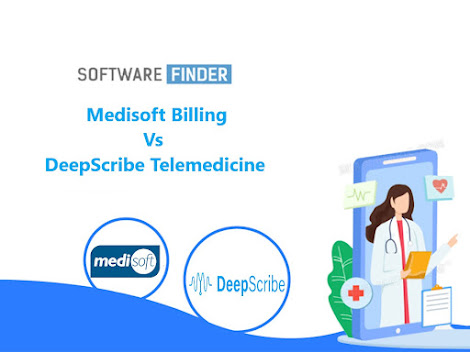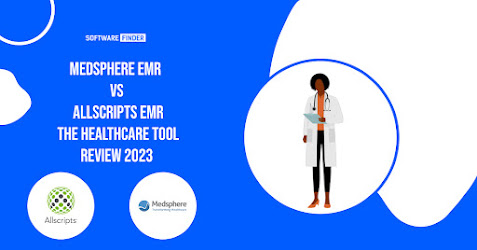In today's world, where technology plays a vital role in every industry, electronic health record (EHR) systems have become an essential part of healthcare. EHRs streamline healthcare operations, improve patient outcomes, and enhance communication between healthcare providers. Two popular EHR systems in the market are Cerner and Athena. In this article, we will compare Cerner vs Athena EHR to help you decide which one is better for your healthcare organization.
Overview of Cerner EHR
Cerner EHR is a web-based electronic health record system designed to manage medical information for healthcare organizations of all sizes. Cerner EHR offers a comprehensive suite of tools that enable healthcare providers to create and maintain patient records, track patient progress, manage appointments, and more. It also includes features such as e-prescribing, billing, and scheduling.
Overview of Athena EHR
Athena EHR is another cloud-based electronic health record system that caters to a wide range of healthcare organizations. Athena EHR is known for its intuitive interface, customizable templates, and ease of use. It provides a suite of tools that enable healthcare providers to manage patient records, track patient progress, and perform clinical tasks such as e-prescribing and lab ordering.
Features Comparison
To compare Cerner vs Athena EHR, let's take a closer look at some of the key features of both systems.
User Interface
One of the critical factors that affect the adoption of an EHR system is its user interface. Cerner EHR has a clean, modern interface that is easy to navigate. It provides users with a customizable dashboard that displays the most relevant information at a glance. Athena EHR, on the other hand, has an intuitive interface that is highly customizable. Users can create custom templates to suit their workflow and personalize their dashboard to access frequently used features quickly.
Clinical Features
Both Cerner and Athena EHR offer a range of clinical features that enable healthcare providers to manage patient care effectively. Cerner EHR includes features such as e-prescribing, medication management, clinical decision support, and patient portals. Athena EHR offers similar features, but its standout feature is its customizable templates that allow providers to document patient encounters efficiently.
Implementation and Support
Implementing an EHR system can be a daunting task, and it is essential to have a reliable support system in place. Cerner EHR offers comprehensive implementation and training services to help healthcare organizations transition smoothly to their EHR system. It also provides round-the-clock support to resolve any issues quickly. Athena EHR provides similar implementation and training services, and their customer support team is highly responsive.
Pricing
When it comes to pricing, both Cerner and Athena EHR pricing models depend on the size and needs of the healthcare organization. Cerner EHR pricing is based on a subscription model and can vary depending on the number of users and the features required. Athena EHR, on the other hand, has a unique pay-for-performance pricing model that allows healthcare organizations to pay based on the number of patient encounters they have per month.
Pros and Cons
To summarize the comparison between Cerner vs Athena EHR, let's take a look at some of their pros and cons.
Cerner EHR Pros:
Comprehensive suite of clinical features
Modern, user-friendly interface
Excellent customer support
Cerner EHR Cons:
Higher pricing compared to other EHR systems
Steep learning curve for some users
Athena EHR Pros:
Intuitive, highly customizable interface
Efficient documentation with customizable templates
Unique pay-for-performance pricing model
Athena EHR Cons:
Limited customization for some features
Occasional performance issues
Which EHR System is Better for Your Organization?
Now that we have compared the key features of Cerner vs Athena EHR, the question remains: which one is better for your healthcare organization? The answer depends on several factors such as the size of your organization, the specific needs of your healthcare providers, and your budget.
If your organization is a larger healthcare system with multiple hospitals and clinics, Cerner may be the better choice due to its scalability and integration capabilities. It offers a wide range of modules and services that can be customized to meet the unique needs of your organization. Additionally, Cerner has a larger market share and a proven track record of successful implementations for large healthcare systems.
On the other hand, if your organization is a smaller clinic or practice, Athena may be the better choice. It is a cloud-based system that requires minimal hardware and IT support, making it a more affordable option for smaller organizations. Additionally, Athena has a user-friendly interface and is known for its ease of use and quick implementation.
When it comes to specific needs of healthcare providers, Cerner may be the better choice for organizations that require advanced clinical decision support and population health management tools. These tools are especially useful for healthcare systems that are focused on improving patient outcomes and reducing healthcare costs. Athena, on the other hand, is known for its revenue cycle management capabilities and may be a better choice for organizations that are primarily focused on streamlining billing and coding processes.
In terms of budget, Cerner may be more expensive upfront due to its implementation and customization costs. However, over the long term, Cerner may be more cost-effective due to its ability to reduce healthcare costs through population health management tools and advanced clinical decision support. Athena, on the other hand, is a more affordable option for smaller organizations due to its minimal hardware and IT requirements.
Overall, the decision between Cerner and Athena EHR ultimately comes down to the specific needs of your organization. Consider the size of your organization, the needs of your healthcare providers, and your budget when making your decision. Both Cerner and Athena are highly regarded EHR systems with their own unique strengths and weaknesses.
Conclusion
In conclusion, Cerner and Athena EHR are two of the most popular EHR systems in the healthcare industry. They offer a wide range of features and capabilities that can help healthcare organizations streamline their operations, improve patient outcomes, and reduce healthcare costs. While both systems have their own unique strengths and weaknesses, the decision ultimately comes down to the specific needs of your organization.




















